Driver assistance systems
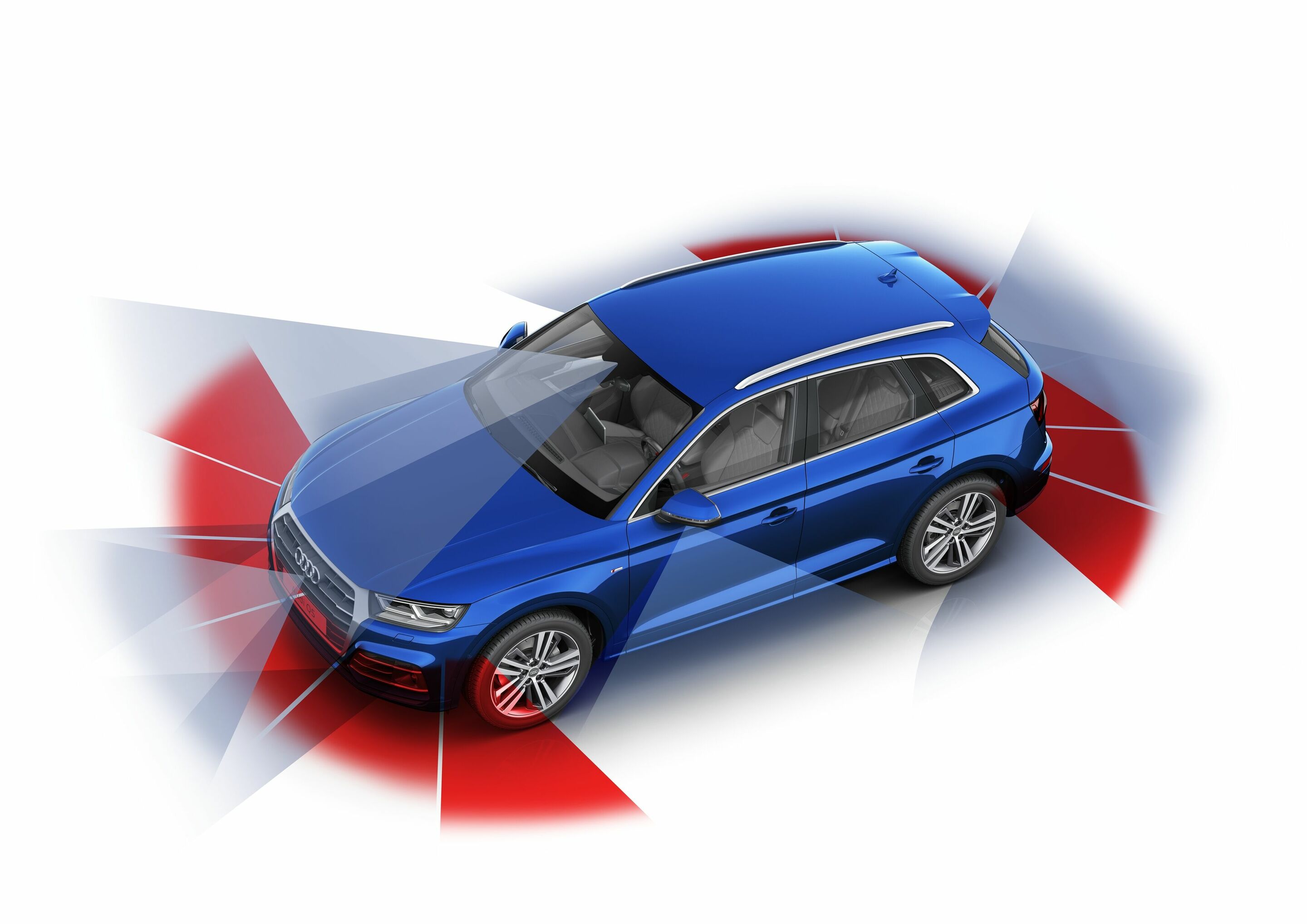

Share article
The new Audi Q5 raises the bar to a new level in its segment. This also applies to its broad selection of driver assistance systems. Compared to the previous model, they are either almost completely new or have been extensively further developed. Some systems are standard; the optional solutions are available either individually or as part of the Parking, City or Tour packages.
Greater safety: the standard systems
The standard safety system Audi pre sense city monitors the road in front of the new Audi Q5 for vehicles and pedestrians over a speed range up to 85 km/h (52.8 mph) . For monitoring, it uses a camera in the windshield which can monitor events up to around 100 meters (328.1 ft) ahead. If it detects an impending collision, the driver receives a series of warnings, and if necessary the system initiates maximum braking.
Within the system’s limits, and at speeds up to 40 km/h (24.9 mph) , Audi pre sense city can avoid an accident in many cases; at speeds up to 85 km/h (52.8 mph) it can reduce the speed at impact and thereby reduce accident severity significantly. If necessary, the system can also activate the protective measures of Audi pre sense basic, front and rear: The front seat belts are pretensioned electrically, and the windows and sunroof close. In case of a crash, the also standard brake assist supports the driver by making specific brake interventions during the accident – with the goal of preventing skidding movements that could lead to secondary collisions.
Attention assist is another standard feature in the new Audi Q5. It is part of the driver information system. It analyzes driving behavior and warns drivers if it finds any indications that they are starting to lose concentration. The adjustable speed limiter, also standard, limits the vehicle’s speed to the speed set by the driver. It is active from a speed of 30 km/h (18.6 mph) .
Distance to the next car: adaptive cruise control
Adaptive cruise control (ACC) is the central component of the optional Tour assist package. The system keeps the new Audi Q5 at a specified distance to the vehicle ahead. The driver can control this distance over five stages. Using Audi drive select, the driver can also adjust the control dynamics.
ACC primarily uses the signals of the two front radar sensors and the camera. In interplay with the S tronic and tiptronic, it covers the entire speed range from 0 to 250 km/h (155.3 mph) . With a manual transmission, it starts at 30 km/h (18.6 mph) . Its Stop&Go function (only with automatic transmission) brakes the new Audi Q5 to a full stop, and – if the driver wishes – it has the car start off again automatically. When the system is deactivated, the distance indicator shows the distance to the car ahead and warns drivers when they are too close.
Autonomous steering: traffic jam assist
Over a speed range up to 65 km/h (40.4 mph) , traffic jam assist can also assume certain steering tasks on roads that are in good condition, as long as the traffic is moving slowly. The system uses data from the radar and ultrasound sensors and the front camera, and it guides the car by gentle steering interventions to enable it to follow the line of vehicles ahead. It obtains its orientation from roadway markings and other vehicles on the road.
When traffic jam assist reaches its system limits – such as when the traffic jam clears up or there is a sharp curve ahead – the human driver has to take over driving tasks again. The driver is alerted in by staged alerts. If the driver ignores all of these, the system independently slows the new Audi Q5 to a safe stop. At speeds over 65 km/h (40.4 mph) , the car automatically and seamlessly engages Audi active land assist.
Warning of front-end collision: Audi pre sense front
The safety system Audi pre sense front extends the collision warning system and automatic braking function of Audi pre sense city for vehicles driving ahead to the entire driving speed range up to 250 km/h (155.3 mph). The system utilizes the two radar sensors and front camera and has the task of either avoiding front-end collisions or reducing their effects at higher speeds. In a dangerous situation, it prompts the driver to apply the brakes according to a complex warning concept – with visual and acoustic signals as well as a braking jolt.
If the driver does not react to the warning signals, the system first initiates autonomous partial braking while simultaneously closing the side windows and sunroof. The last step is maximum braking, assuming that the vehicle ahead is moving; at the same time the seat belts are tensioned. Audi pre sense front remains functional even when ACC is deactivated.
For economic driving: the predictive efficiency assistant
Another highlight in the Tour assist package is the predictive efficiency assistant (available in conjunction with a navigation system). When adaptive cruise control is activated, the system adapts the driving speed to the situation, the topography of the route, speed limits and road users driving ahead. On highways it can improve fuel economy by up to ten percent in this way.
Even if navigation is inactive, the predictive efficiency assistant uses the route data to alert the driver about situations in which it is advisable to slow down. The system detects curves, traffic circles and intersections, inclines and descents, town limits and speed limit signs before they become visible. A related message is displayed in the instrument cluster or the Audi virtual cockpit.
If the driver wishes, the system itself will control the freewheel function of the tiptronic within certain boundary conditions so that the new Audi Q5 will roll at idle speed towards the slow-driving zone. Once coasting ends, the SUV automatically accelerates back to the selected speed set by the driver, provided that ACC is enabled.
Safety and convenience: other systems in the Tour assist package
From a speed of 65 km/h (40.4 mph) , Audi active lane assist helps the driver to stay in the driving lane. The most important signal source of the system, which is also available as a separate option, is a video camera that detects lane markings. The driver is assisted by gentle interventions in the electromechanical power steering. If the setting in the MMI system is for early control intervention, the system keeps the car in the middle of the lane. A steering wheel vibration can also be set, which warns the driver if the car is leaving the driving lane.
Collision avoidance assist is another system of the Tour assist package; it assists drivers when they need to drive the Audi Q5 around an obstacle to avoid a collision. From the video camera and radar sensor data, it instantaneously computes an optimal avoidance track, taking into account the distance, width and offset of the vehicle ahead.
In conjunction with Audi pre sense front, the system initiates a warning jolt in a dangerous situation. If the driver then steers, it assists with specific torque interventions in the power steering system.
Another innovation in the Audi Q5 is turn assist, which monitors oncoming traffic when turning left at driving speeds between two and ten km/h (1.2 – 6.2 mph) . In a critical situation, it brakes the new SUV in a suitable driving lane to a standstill. The system is active in the background as soon as the driver activates the turn signal to turn across the carriageway.
The camera-based recognition of traffic signs (only with navigation system) rounds out the Tour assist package. It is able to detect several traffic signs simultaneously, including digital displays and supplemental signs, and it presents them to the driver as graphics in the head-up display and on the MMI monitor. In addition, it can warn the driver about driving on streets in the wrong direction.
For urban people: the city assist package
The City assist package includes the lane-changing assistant Audi side assist, which is also available separately. At speeds from 15 km/h (9.3 mph) , it uses the two rear radar sensors with a scanning range of some 70 meters ( 229.7 ft) to assist drivers when changing lanes. If a vehicle approaches rapidly or is located in the blind spot, a warning LED in the housing of the respective exterior mirror lights up. If the driver still operates the turn signal, the LED flashes brightly several times in succession.
The Audi side assist works together with Audi pre sense rear, which initiates preventive protective measures like those of Audi pre sense basic in case of an impending rear-end collision. It remains active in the background – at every speed – even if Audi side assist is turned off, unless a trailer is being towed. Audi pre sense rear also has the functionality of Audi pre sense basic, which detects unstable driving states via the sensors of stabilization control.
While slowly backing up, cross traffic assist rear warns the driver of vehicles whose approach it deems critical, such as when pulling out of a perpendicular parking spot. The data from the rear radar sensor serve as the basis. The system is enabled when the parking system is activated. There are different levels of warning: visual, acoustic and finally a short jolt of the brakes.
Exit warning, which also utilizes the rear radar sensors, comes into play after the car has stopped. If other vehicles or bicycles are approaching from behind, it warns the driver and passengers not to open the doors by having a warning LED flash bright in all four door handles. The system remains in readiness for about three minutes after the ignition is switched off.
Other systems round out the City assist package. They are: acoustic and visual park assist plus, which activates independently whenever an obstacle is detected while maneuvering, and the reversing camera, which has a cleaning system. Both solutions are also available separately.
Helpful in everyday driving: the Park assist package
The Park assist package includes such features as park assist, which can also be ordered separately. At moderate driving speeds, the system is able to detect parallel and perpendicular parking spaces along the side of the road. As soon as the driver presses the park button, the new Audi Q5 steers into the space, assisted by twelve ultrasonic sensors, even if it involves multiple maneuvers. The driver only needs to set the right gear, accelerate and brake. The driver can also have park assist steer out of parallel parking spaces.
The surroundings cameras, the second part of the package, were designed for complex maneuvering situations. They display different views of the car’s immediate surroundings on the MMI monitor, including a virtual bird’s eye view and 180-degree images of the front and rear. Guide lines are shown on the display to simplify maneuvering in reverse.
The equipment, data and prices specified in this document refer to the model range offered in Germany. Subject to change without notice; errors and omissions excepted.
adaptive cruise control with stop & go function
The central element of the Audi driver assistance systems is the adaptive cruise control with stop & go function, an automatic distance control system. The system, which is available in a number of larger models, regulates the speed and the interval to the vehicle ahead by automatically accelerating and braking in a speed range of 0 to 250 km/h (0 – 155.34 mph).
The ACC stop & go uses two radar sensors installed at the front of the vehicle which are automatically heated when it is cold. They transmit radar waves at a frequency of 76.5 gigahertz covering a roughly 40 degree wedge-shaped field measuring approx. 250 meters (820 ft) in length. A computer processes the signals and thus detects vehicles ahead. The driver can influence the function of the ACC stop & go; the interval to the vehicle ahead and the control system dynamics are adjustable in steps. The system accelerates smoothly or sharply, depending on the setting. Deceleration is limited to roughly 4 m/s2 (13.12 ft/s²), which is a good third of what is possible. In stop-and-go traffic, the ACC stop & go automatically slows the car to a stop. After a brief stop, the vehicle moves off again automatically and follows the vehicle ahead. After a longer stop, the driver must tap the accelerator or the cruise-control lever. The adaptive cruise control with stop & go function is a highly intelligent system – thanks to its broad networking. It works closely together with other driver information systems, and each of them contributes its own specific strengths. All told, the ACC stop & go in the Audi A8 takes data from around 30 control units, with which it works to continuously analyze the complete area around the vehicle. This expanse of knowledge enables the system to recognize complex scenarios and predictively support the driver. Because it also cooperates with the navigation system, it knows the course of the selected route in advance and can also compute the lane in curves, for example. The ACC stop & go uses its networked knowledge in numerous situations. Whether quickly passing a car turning right from an interurban road or if another vehicle pulls into the lane occupied by the vehicle on the highway, the system handles many situations with the reflection and composure of a skilled driver, making driving even more fluid and harmonious. Audi offers the adaptive cruise control in a number of different versions, with and without stop & go function, depending on the model series. The function of the individual versions varies slightly due to the different degrees of networking and the expansion levels.
Status: 2011
Your browser leaves much to be desired.
adaptive cruise control
- Embed this video
- AUDI AG 2011">Copyright details for this image
- Download: mp4 1280x720, 15 MB
- Download: mp4 1248x702, 13 MB
- Download: mp4 852x480, 9 MB
Download basket
- mp4 1280x720, 15 MB
- mp4 1248x702, 13 MB
- mp4 852x480, 9 MB
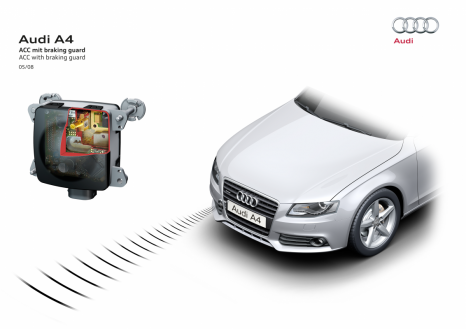
Radar sensor: the ACC in the Audi A4
- Download this image
- Add this image to download basket
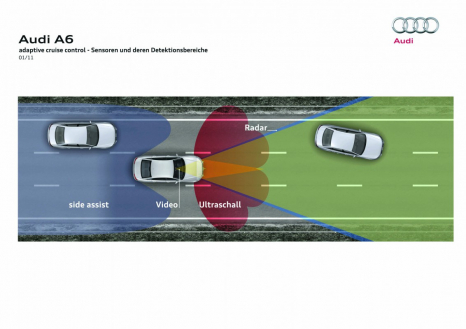
Field of view: the ACC stop & go covers a wide, wedge-shaped field
- Tips & advice
Cruise control and adaptive cruise control: the complete guide
Cruise control is a great extra to have if you do regular motorway journeys, while adaptive cruise control arguably makes even more sense.

What is cruise control? Cruise control is an electronic system that automatically regulates a car's speed without the driver having to keep their foot on the accelerator. That's the simple answer, but today car manufacturers are adding ever-more advanced cruise control systems to their models, all designed to make driving easier and safer, while many of the newer technologies are on the first tentative steps towards autonomous vehicles .
Once upon a time, cruise control was the preserve of high-end luxury cars, but as the technology has become more affordable, car makers have rolled it out on more mainstream models. Today, you can get it on even the smallest city cars , while other models get a proprietary speed limited system that requires a bit more input from the driver.
• What is AEB?
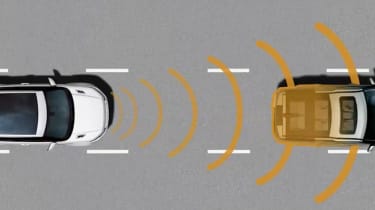
Elsewhere, the progress of technology means that car makers have been able to develop adaptive cruise control (ACC) systems that can vary a car's speed according to traffic, while the most advanced systems are on the steps towards fully autonomous driving.
Here we explain how cruise control works and break down the different kinds of system on offer, highlighting their advantages and limitations, so you can decide if it's an option that's worth ticking on your next new car purchase.
Cruise control history
Cruise control can trace its origins back to the 17th and 18th century, when engineers developed 'speed control' systems for steam engines. These mechanical systems were adapted by some early automobile makers at the start of the 20th century, although the predecessor to modern cruise control didn't appear until the 1950s.
The first car to feature cruise control was a 1958 Imperial, which was Chrysler's luxury division. Called 'Auto-pilot', the system was mechanical and was connected to the engine propshaft. It had a dial on the dashboard to preselect a speed and an electric motor that adjusted throttle position to maintain it.
US firm American Motors produced a budget version of cruise control for its automatic cars in 1965, but cruise control really took off in the US during the oil crisis of 1973. Manufacturers had developed electronic cruise control systems by this time, and these makers promoted the benefits of the system as it delivered constant throttle inputs, rather than the erratic flexing of the driver's right foot for improved fuel economy.
• What is horsepower?
Cruise control found popularity in the US first because of that nation's fondness of automatic gearboxes, long travelling distances and the relatively straight and wide highway network. In Europe, cruise control took a little longer to gain a foothold, but like the US, it first appeared on high-end luxury cars before filtering its way down to more mainstream models.
The first adaptive cruise control (ACC) system appeared in Japan in the early 1990s, although the first systems simply warned the driver of slower traffic ahead, and didn't control the car's throttle or brakes.
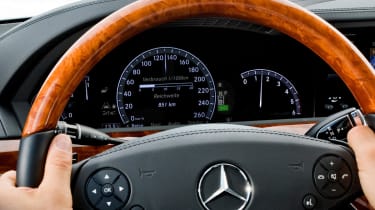
The first proper ACC system was Mercedes ' Distronic system, which appeared on the S-Class limousine in 1999. This system not only controlled the throttle, but also the brakes to maintain a set distance to the vehicle in front.
Since then, car makers have embraced ACC, and it can be found on superminis , hatchbacks and sports cars , while the rising level of traffic on our roads means it's arguably a more useful feature than standard cruise control on its own, as it can adjust speed according to traffic flow.
• What is 4x4? All-wheel-drive systems explained
How does cruise control work?
Modern cruise control systems are integrated into a car's electronics, and are often combined with additional tech, such as lane departure warning and blind spot sensors. With standard cruise control, you need to select cruise mode via a switch, then accelerate to your desired speed, and press a button – either on the steering wheel or on a lever on the steering column - to set that speed.
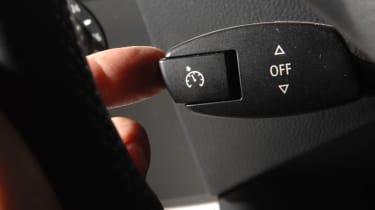
The car's electronics then maintain your selected speed, so you can take your foot of the accelerator. On some cars you can adjust your speed via a button, and the car will automatically change its speed accordingly.
On a car with adaptive cruise control (ACC), you switch on the system, then you can raise or lower your speed as desired, and the car will accelerate to that set speed. These systems use either radar or laser sensors to maintain a set distance to the car in front, and they also have the ability to increase or decrease that distance as required.
To deactivate cruise control, you simply press a button to regain control of the throttle. However, one important safety feature that all of these systems are required to have is that the system will immediately deactivate if the car's brakes are applied. On cars with a manual gearbox, pressing the clutch pedal will sometimes have the same effect, although not all cars behave in the same way. Most cars will have a memory function, so that you can resume the same speed after the brakes have been applied.
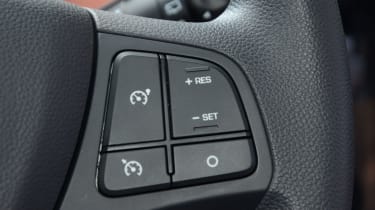
Earlier cruise control systems would have a lower speed threshold of around 20-30mph where cruise control couldn't be activated, and some manufacturers still maintain this set-up. However, some of the latest ACC systems also incorporate a traffic function, so they can operate in stop-start conditions.
Cruise control types
Essentially there are four types of cruise control on offer, ranging from the most basic speed limiter to systems that can negotiate stop-start traffic and even change lanes. We look at the benefits and disadvantages of each below.
Speed limiter
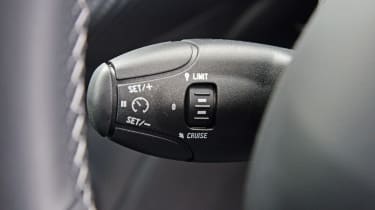
What is it? The most basic form of cruise control. There are systems that can be hard-wired into a vehicle to limit its top speed (a 70mph limit in vans, for example), or there are driver-activated systems. You can set a maximum speed for your vehicle, but you maintain control of the car's accelerator at all times. When you approach your set maximum, the car will simply stop accelerating. This will usually happen softly, so you'll barely notice.
Found on: Citroen, Ford, Nissan, Peugeot, Renault, vans, can be added aftermarket, too. Advantages: Helps you stick to speed limits, saves fuel. Disadvantages: Driver has to continue using the throttle to maintain speed.
Cruise control

What is it? Standard cruise control is a fairly common feature on new cars. You turn the system on (usually indicated by a graphic on the dashboard), then once you're up to your desired speed, you press a button to set it, and the car maintains that speed.
Found on: Most mainstream new cars, except for the most basic trims. Advantages: Takes strain out of long drives, more fuel efficient than using the accelerator manually, helps you stick to speed limits. Disadvantages: Driver has to take over when traffic slows, only worth using on clear motorways.
Adaptive cruise control
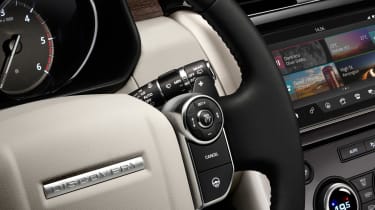
What is it? Either a radar or laser-based system that can maintain speed, but reduces speed if the gap to the car in front falls below a preset distance. This constitutes Level One automation on the automated vehicle classification chart, as they driver is required to take control at any time.
Found on: Assorted BMW, Fiat group, Ford, JLR, Lexus, Mercedes, VW Group models, and increasing in use by other makers. Advantages: Adjusts speed according to traffic, takes strain out of long drives, helps fuel efficiency. Disadvantages: Sensors can be 'blinded' in bad weather, electronics can be slow to react to sudden traffic slowing, distance to the car in front can be big enough to tempt other drivers to cut in front of you, sometime systems are jerky when changing speed.
Semi-autonomous cruise control
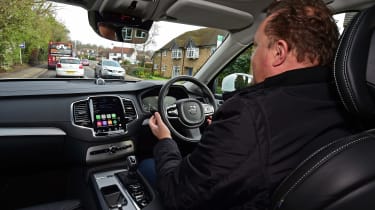
The latest hi-tech cruise control systems are one step closer to the fully autonomous self-driving car, and are classed as Level 2 automation. This means the automation can control the throttle, brakes and steering, but the driver still needs to intervene if the systems fail to detect objects. Semi-autonomous systems can vary in sophistication, and can help with steering inputs, move in stop-start traffic, or even change lanes on the motorway with the flick of an indicator, or adjust the car's speed according to GPS data and road sign recognition cameras.
Found on: Audi A3 /A8/Q7, BMW 7 Series , Mercedes S-Class , Volvo XC90 Advantages: Takes strain out of driving and traffic jams, helps fuel consumption. Disadvantages: Sensors need to be kept clear for it to work, too easy for driver to 'switch off' and lose concentration.
Do you have cruise control or adaptive cruise control on your car? Do you use it? Let us know what you think of the technology in the comments...
Dean has been part of the Auto Express team for more than 20 years, and has worked across nearly all departments, starting on magazine production, then moving to road tests and reviews. He's our resident van expert, but covers everything from scooters and motorbikes to supercars and consumer products.
Most Popular
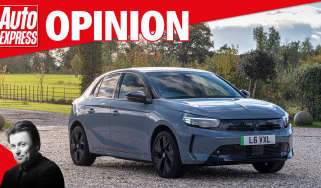
‘Vauxhall listened to criticism and cut its electric car prices, now other brands need to follow suit’
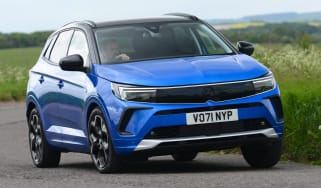
Car Deal of the Day: Vauxhall Grandland Ultimate is a fully-loaded SUV at just £172 a month
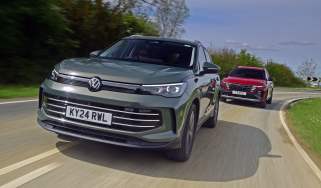
Volkswagen Tiguan vs Hyundai Tucson 2024 twin test: family SUVs fight it out
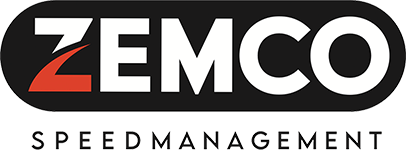
- Quote request
Welcome to Zemco
Our Categories
Cruise control, speed limiter, rpm limiter, acceleration limiter, sent a/d inverter, become a zemco distributor.
We are looking for new distributors. Is zemco not yet sold in your country, do you import car electronics and does your company have a technical support department? Then please contact us.
Become a ZEMCO Dealer
We are looking for new dealers. Do you have experience installing car electronics? Then please contact us
Experience the Superior Quality and Innovation of Zemco
Zemco is a renowned brand that has been a leader in the production and distribution of high-quality cruise control systems and speed limiters for over three decades. As the official manufacturer, we take great pride in providing our esteemed customers with access to Zemco’s superior product range, backed by expert support.
We Are Here to Assist You
Our dedication to providing excellent service extends beyond the sale of our products. Whether you need technical support or personal advice regarding the best Zemco product for you, we are always here to assist. Our team of experts is committed to ensuring that you have a seamless experience with our products and services.
Contact us now for the best quotes.
Customer Viewpoint Ratings and Reviews
Who leaves ratings and reviews?
Ratings and reviews are provided by customers who have either purchased a vehicle or visited a dealership for service.
How are ratings and reviews collected?
Customers are invited to participate in a survey administered by MaritzCX, an independent, third-party supplier.
Can dealerships edit or remove reviews?
No. Ford personnel and/or dealership personnel cannot modify or remove reviews.
Are reviews modified or monitored before being published?
MaritzCX moderates public reviews to ensure they contain content that meet Review guidelines, such as:
‣No Profanity or inappropriate defamatory remarks
‣No Personal Identifying information (e.g., customer phone number or email)
‣No Competitor references (e.g., another brand or dealership)
‣Dangerous behavior (e.g. threatening to harm employees or others)
‣Lack of adequate text (e.g., symbols, emoji’s and random letters)
Reviews on the product and not the customer’s Sales or Service experience
- Electric Vehicles
- Pay my bill
- Update my SYNC
- Replace a Part
How do I use Ford Intelligent Adaptive Cruise Control * ?
Watch the video and follow the steps below to learn how to use Intelligent Adaptive Cruise Control, which combines Speed Sign Recognition with Adaptive Cruise Control , to adjust the cruise set speed to the speed limit detected by the speed sign recognition system. For example, if the Speed Sign Recognition system detects a 50 mph speed limit, the cruise set speed is updated to 50 mph.
Using Intelligent Adaptive Cruise Control
Additional information.
What is Speed Sign Recognition? What is Adaptive Cruise Control? What is Lane Centering? What is Auto Hold?
* Feature is available on select vehicles. Features may vary based on model year, trim, options, packages, and supply availability. Use the Build and Price tool to view feature availability on current models. If you have questions or need more information, reference your Owner’s Manual or contact your Ford Dealer . Driver-assist features are supplemental and do not replace the driver’s attention, judgment, and need to control the vehicle. Refer to your Owner’s Manual for details and limitations.
** Don’t drive while distracted or while using handheld devices. Use voice-operated systems when possible. Some features may be locked out while the vehicle is in gear. Not all features are compatible with all phones.
*** Actual screens may vary. See your Owner’s Manual for information specific to your vehicle.
Cruise control
Automatically keeps your car moving at a safe, constant speed..
Our cruise control system 1 works electronically to help regulate your car's speed. It reduces the stress on drivers and offers you more comfort on long journeys by keeping the vehicle at a constant speed. It's particularly effective when you have to stay within speed limits for a long way - when driving through miles of roadworks on the motorway, for example - and cuts the risk of your speed creeping up by accident.
The system works by memorising and maintaining the speed you select. It's very flexible, too. You can increase or reduce speed manually - to a defined value - and you also have the option of returning to the speed most recently memorised.
The cruise control system can be turned off simply by pressing a button or by pressing the brake or clutch pedals. For safety reasons, the cruise control system should not be used in heavy traffic or in difficult road conditions, such as heavy rain or ice.
For more information watch our cruise control video Opens an external link
Adaptive Cruise Control (ACC)
Volkswagen ’s safe distance technology ..
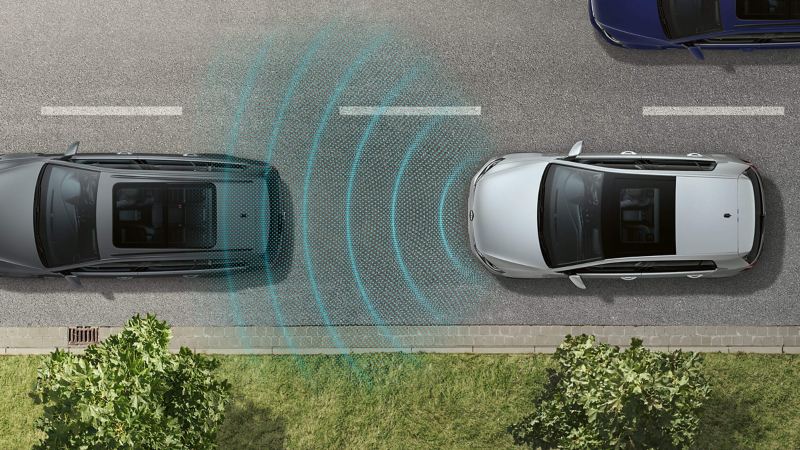
Adaptive Cruise Control (ACC) helps to avoid accidents by always keeping your car at a safe distance from the traffic ahead.
Working together with the radar-controlled Front Assist traffic monitoring system, our adaptive cruise control system keeps you at a safe distance from the vehicle in front, making driving much easier - whether on motor way journeys or in slow and moving traffic.
As with cruise control, you set the speed at which you want your car to maintain. This is then further enhanced by being equipped with the safe-distance technology using a radar sensor, which modulates your speed based on traffic conditions. The system detects traffic slowing ahead and automatically reduces your speed to match and maintain an appropriate gap to the car in front. If necessary, the system will bring your car to a complete stop.
It does this with the help of the Front Assist system which primes the brakes if it senses a collision is likely, shortening the stopping distance when the driver hits the brake pedal.
How it works
The safe-distance technology 's radar sensor has a range of up to 200 metres and a beam angle of 12 degrees. The radar sensor and control unit are combined into a single unit which is located at the front of the car.
Using the signals from the radar sensor, the control unit computes the distance to the vehicle ahead and your car's speed relative to it. It also works out its lateral position on multi-lane roads. If there are several vehicles within the sensor's field of coverage at the same time, this information is used to select which of the vehicles the system should track. The radar sensor is not capable of detecting stationary obstructions, such as the end of a tailback or crash barriers, however.
If approaching a slower vehicle ahead or if another vehicle cuts in front of you, the adaptive cruise control slows down the car by initiating corrective controls in the engine management and, if necessary, in the braking system too. If the required rate of deceleration exceeds 30% of the vehicle's maximum stopping power, visual and audible warning signals will prompt the driver to apply the brakes manually.
Adaptive Cruise Control V1.5
In addition to the standard Adaptive Cruise Control, this version has a greater operating range of speeds between 0 -130mph.
Adaptive Cruise Control with Predictive Cruise Control
In addition to the above, this updated version of ACC includes:
Road recognition - using information from front and rear cameras and route information, your vehicle will predictively adjust its speed prior to junctions and bends.
Speed Assist - using both the front camera and route information identifies changes in the posted speed limit and automatically adjusts the vehicles speed.
For more information watch our Adaptive Cruise Control video Opens an external link
Your protection is a priority for us, so we welcome independent crash tests to be carried out on our cars.
JavaScript seems to be disabled in your browser. For the best experience on our site, be sure to turn on Javascript in your browser.
Precision Electronic Systems
- Create an Account
Cruise Control
Our cruise control kits can help drivers to reduce fuel
consumption and avoid unintended speeding.
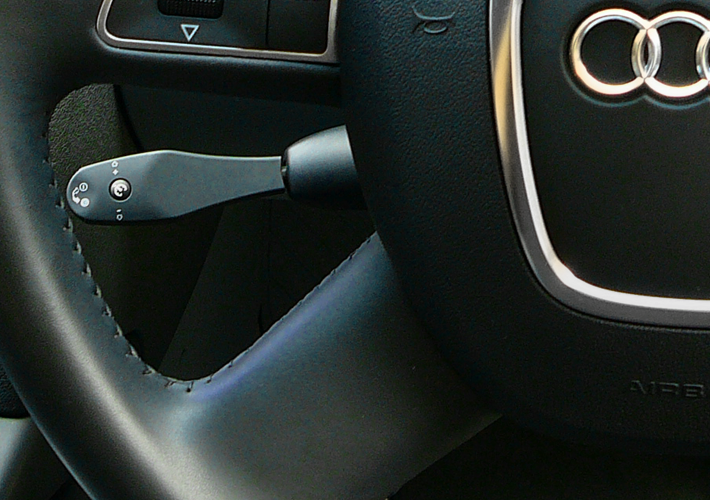
Bridgwater Electronics supply aftermarket Cruise Control kits suitable for use on many vehicles, to check your vehicle compatibility please see our guide for compatibility for popular vehicles , or use our enquiry form and we will get back to you asap. These kits allow the driver to relax their feet from the pedals and just steer. The system is easily activated and de-activated by the flick of a switch. There are a number of driver benefits that a cruise control kit can offer when activated:
- Helps to reduce fuel consumption and exhaust emissions (lowering your carbon footprint).
- Allows you to concentrate on the road and not your speedometer.
- Helps avoid unintended speeding.
- Allows you to set a maximum vehicle speed limit in safety camera enforcement areas.
- Reduces driver fatigue and enhances driver comfort.
The Bridgwater Electronics range of Cruise Control products comprises 2 systems:-
The 2 systems may be operated by one of 3 different types of control:-
- CM7 Dashboard Mounted Control
- CM21 Steering Wheel Mounted Control
- CM35 Left Hand Stalk Control
The AP900 & AP900C systems are suitable for vehicles that have electrically operated accelerator control. This type of control is often referred to as ‘Drive-by-Wire’.
Read more about the benefits of aftermarket cruise control kits, as well as a little history on the development of cruise control technology itself.

- Alarms 7 items
- Accessories 15 items
- Aftermarket Immobilisers 3 items
- Central Locking Kits 2 items
- Motorcycle Alarms & Immobilisers 1 item
- Japanese Imports 3 items
- Reversing/Parking Sensors 5 items
- SpeedGenie Speed Alarm 1 item
- Car Security Repairs 1 item
- Universal Timers 2 items
- Parking Sensor Interface 1 item
- Commercial Vehicle Lighting Products 1 item
- GPS Road Speed Signal Interface 2 items
- Laserline Range 6 items
- Flashpoint Range 5 items
- Foxguard Range 6 items
- Bee Secure Range 2 items
- Sterling 1 item
- Key Fob Cases & Batteries 9 items
- Cruise Control 5 items
- In Stock 5 items
Cruise Control Enquiry Form
Cruise control compatibility.
- Remove This Item
Adaptive cruise control with speed limiter.
The Adaptive cruise control (ACC) supports the driver within the system limits
Speed and the distance to the vehicle in front. If a vehicle in front is detected, it can brake or accelerate the vehicle within the system limits. Even in stop-and-go traffic and in
The system brakes traffic jams to a standstill and can be automated again depending on the duration of the downtime approach.
Due to the large number of parameters involved, the adaptive speed assistant offers as much as possible comfortable driving in the range from 0 to a maximum of 200 km / h. The system uses radar sensors and a front camera and the ultrasonic sensors to permanently monitor the vehicle’s surroundings.
The included speed limiter helps not to exceed a previously set maximum speed when driving manually. The speed limiter operation can be temporarily deactivated via kick-down and the set maximum speed is exceeded. The function is available from approx. 30 km / h
The cruise control handle controls the function
You enable the cruise control with pressing the buttom at the end. Or you can resume earlier speed with pulling the lever.
Speed is adjusted with pushing the lever up and down. You can control the distance to the car in front with the distance button. The lim button on top enable the speed limiter.
This option is part of the tour driver assistance package with option id PCC
Audi all-electric models
Click on link for direct access to the different model info for Audi all-electric models
- Audi Q6 e-tron
- Audi Q8 e-tron
- Audi A4 e-tron
- Audi A6 e-tron
- Audi e-tron
- Audi e-tron GT
- Tips and advice
What is cruise control and adaptive cruise control?
Cruise control is a handy feature that can reduce fatigue when driving – we explain how it works.
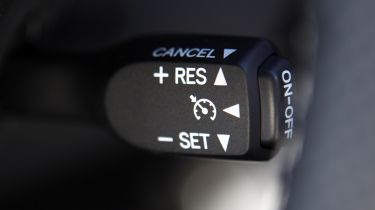
Modern cars are crammed with impressive tech to make driving both easier and safer, and cruise control is perhaps the most common system of the lot. It allows drivers to travel at a preset speed without having to use the accelerator pedal, taking some of the strain out of long motorway drives. The system has existed for decades, but the latest computer and sensor technology has made cruise control smarter than ever.

Not all cruise control systems are the same. Some include a speed limiter function, designed to stop the driver exceeding the speed limit, while more advanced cars feature adaptive cruise control, allowing the car to slow down and speed up with traffic automatically. In this guide we cover the differences between different systems, as well as how to use them.
What is cruise control?
Cruise control is a system that can control the speed of a car automatically. Most cruise control systems allow the driver to set a specific speed that the car will maintain without the need to use the accelerator pedal. It can be found on cars with an automatic or manual gearbox, although its functions are usually more limited in the latter. Most electric cars also come with cruise control.
It’s designed to be used on long A-road or motorway journeys, allowing the driver to rest their right foot. The first cruise control systems held the throttle open mechanically, but modern systems are computer-controlled. Many cruise control systems will only activate above a certain minimum speed, usually around 25 to 30mph.
What is adaptive cruise control?
Adaptive cruise control (often abbreviated to ACC) is a more advanced cruise control system that uses lasers, cameras or radar mounted in the front bumper to track the speed and position of the vehicle in front. Cars fitted with the system can automatically match the speed of the vehicle in front and maintain a safe distance. Many systems allow the driver to set their preferred distance to the vehicle in front.

If the vehicle ahead slows down, the driver’s car will also slow down without the need to use the brake pedal. If the vehicle ahead speeds up, the driver’s car will only speed up until it reaches the limit set by the driver. However, only systems paired with an autonomous emergency braking system will automatically perform an emergency stop if the car ahead comes to a sudden halt.
The system is sometimes referred to as ‘dynamic’ cruise control, while other automakers use their own names; Mercedes calls it ‘Distronic Plus’ and Porsche, ‘Porsche Active Safe’.
Some vehicles even have ‘Traffic Jam Assist’, an extension of adaptive cruise control that can automatically slow the car to a halt as well as accelerate and brake at low speeds in congestion, reducing driver fatigue. It’s worth noting that after coming to a halt for more than a few seconds, safety requirements mean driver intervention is usually required; squeezing the accelerator should allow Traffic Jam Assist to resume.
How do I use cruise control?
Check your car’s handbook for the location of the cruise control buttons as they differ from vehicle to vehicle. They are often found in an easy-to-access location, such as on the steering wheel or column stalk, to make them quick and safe to use.
The system can be overridden by pressing on the brake pedal, so you should keep your foot close to the brake in case of emergencies. There may be differences in controls between different manufacturers, so always read your car’s handbook first. Some typical cruise control buttons include:
- On/off: This activates the system, but probably won’t hold you at your desired speed. Turning it on will almost always be accompanied by a dashboard light.
- Set: Once the system is switched on, pressing the set button should tell the car to hold the current speed. In most cars this will turn the dashboard indicator green.
- Cancel: This pauses the cruise control, so you have complete control again, without turning cruise control fully off. The cruise control should still remember the speed you chose to cruise at.
- Res or resume: Pressing this will see the car accelerate back up to the speed you chose before hitting the cancel button or pressing the brake pedal. You'll still need to change gears in a manual car if necessary. An automatic gearbox will change gears for you.
- Up and down arrows or ‘+’ and ‘-’: With cruise control activated, use these to increase or decrease the car’s speed. Single presses often increase or decrease the speed in small increments, while holding the same button or stalk changes it in increments of 5mph or even 10mph. Of course, this varies from one model to another.
Cruise control is best used on long stretches of motorway and should be used to maintain a safe speed while the driver pays full attention to their surroundings. Drivers should not treat cruise control like an autonomous driving system, and the driver needs to pay as much attention to the road when using cruise control as they do with regular driving. Keep your foot near the brake pedal in case of emergencies – a tap of the brakes will deactivate cruise control and allow you to stop safely, without needing to reach for the cancel control.
What is a speed limiter?
Some cars are fitted with a speed limiter, either alongside cruise control or on its own. As with cruise control, you set the maximum speed you’d like to travel at, but unlike cruise control, you're still required to press down the accelerator. This is ideal for busy speed-limit zones, where you may want to maintain complete control of your speed without exceeding the limit. Squeeze the accelerator, and your car will simply reach your chosen speed and stop accelerating. However, pressing the throttle pedal all the way down will override the system –it’s a fail safe designed to let you accelerate out of trouble if needed.
What is the benefit of cruise control?
When should i use cruise control, is cruise control safe, does cruise control save fuel, car technology made simple….
- What are brake pads and discs?
- What is autonomous emergency braking?
- What is ESP on a car?
- What is traffic jam assist?
- What are blind spot monitoring systems?
- What is cross traffic alert?
- Euro NCAP: how safe is my car?

Charlie writes and edits news, review and advice articles for Carbuyer , as well as publishing content to its social media platforms. He has also been a regular contributor to its sister titles Auto Express , DrivingElectric and evo . As well as being consumed by everything automotive, Charlie is a speaker of five languages and once lived in Chile, Siberia and the Czech Republic, returning to the UK to write about his life-long passion: cars.

Most Popular

Best new car deals 2024: this week’s top car offers
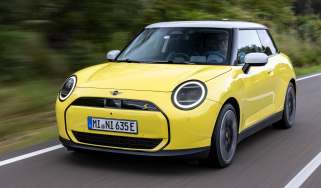
MINI Cooper review – cheeky and fun as ever, but a harsh ride
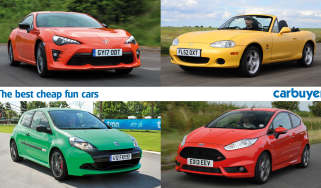
The best cheap fun cars from under £5k to over £10k
Tips & advice

Car dashboard warning lights: the complete guide

Electric car charging stations: a complete guide

PCP vs HP – which type of car finance is right for you?

Average speed cameras: how do they work?

Top 10 best car interiors

Top 10 best electric cars 2024

Top 10 best cheap-to-run cars 2024

The UK's top 10 fastest hot hatchbacks 2024
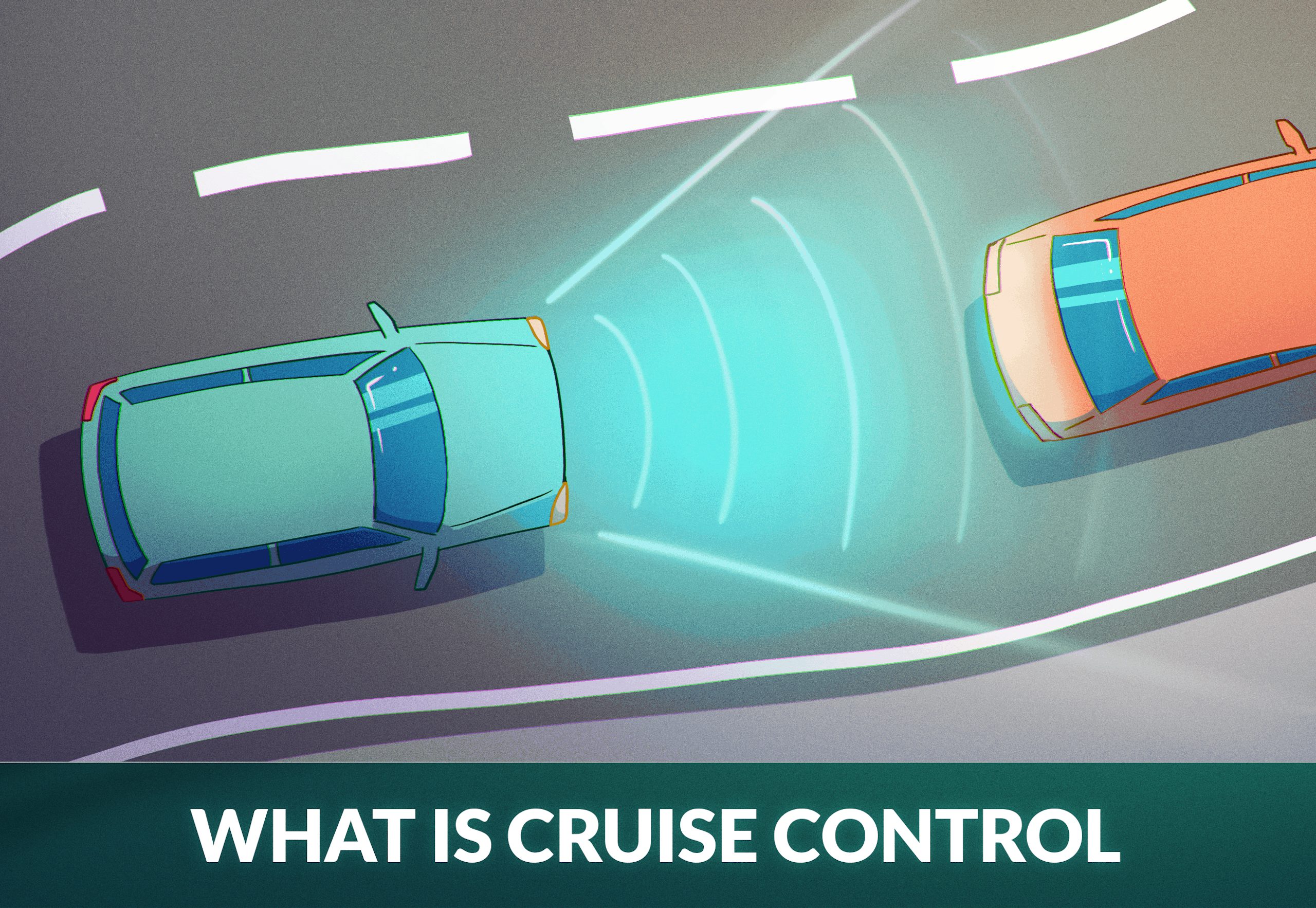
Cruise Control Explained – All You Need to Know
Cruise control has come a long way since first invented and patented by Ralph Teetor in 1950, who originally named it the “Speedostat”. Chrysler Corporation was the first manufacturer to offer the groundbreaking mechanism as an option on several of its luxury vehicle models nine years later. Today, cruise control is rapidly becoming the standard on all new vehicles, providing drivers with increased convenience on their daily drive.
As you’re learning how to operate a vehicle , understanding cruise control will help increase your comfort behind the wheel and knowledge of driving.
What is Cruise Control?
Cruise control is an electronic device within your vehicle that controls the speed of your vehicle. It allows the driver to maintain a constant speed of 25 mph without holding their foot on the accelerator. Although the feature has been around for 70 years, automotive manufacturers continue to improve upon the technology to provide drivers with increased comfort, luxury, and convenience whenever they’re behind the wheel.
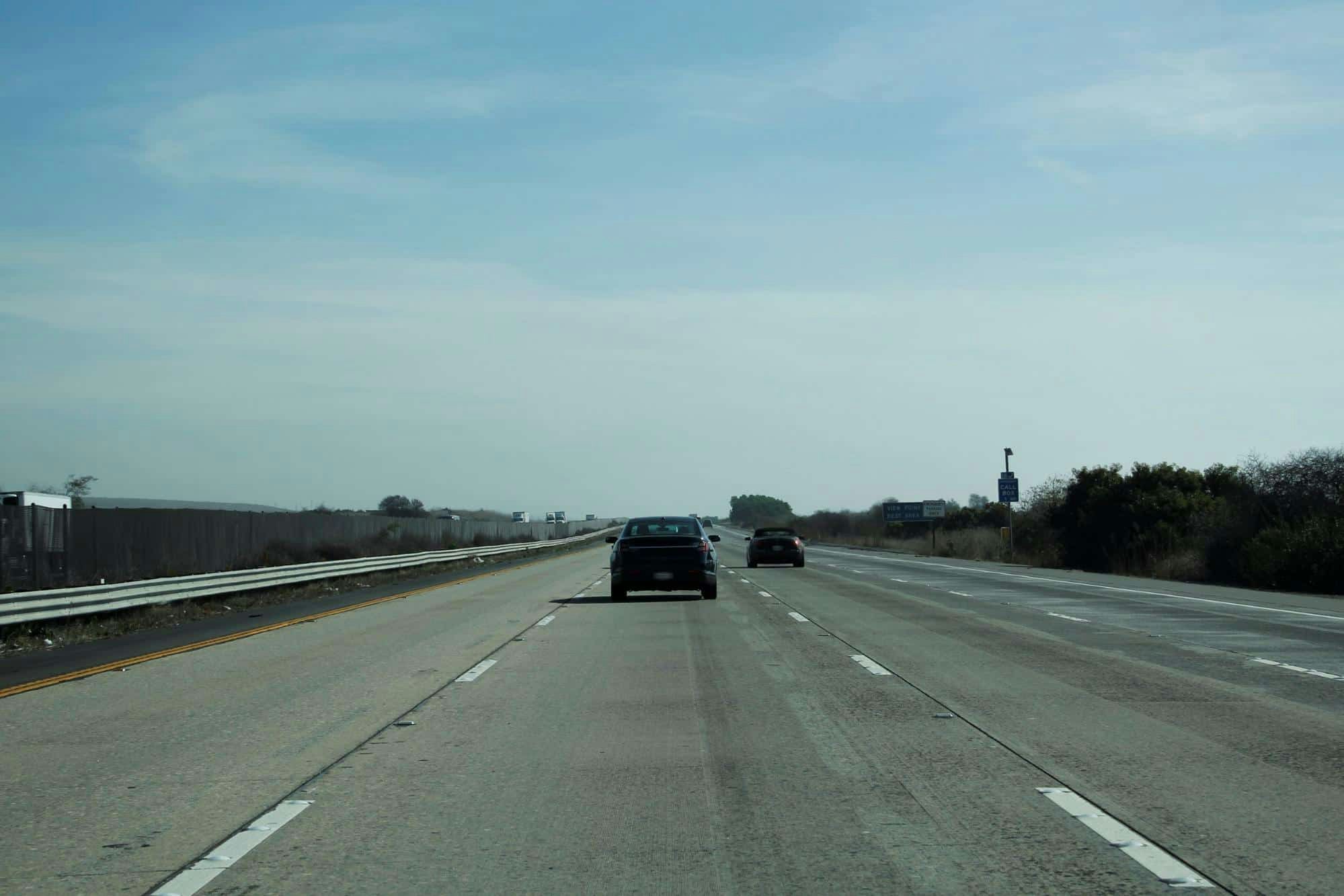
Different Types of Cruise Control
There are 3 types of cruise control systems.
- Speed Limiter
- Adaptive Cruise Control
- Semi-autonomous Cruise Control
What is a Speed Limiter?
A speed limiter will limit how fast the driver can accelerate behind the wheel. All modern vehicles contain a standard speed limiter capping speed between 120 mph and 180 mph depending to protect the vehicle’s engine and discourage reckless driving. However, an additional limiter can be added as an option in many European-made cars, as well as Tesla, Ford, and Nissan. Drivers are still required to keep their foot on the pedal to keep their vehicle in motion, but will not be able to accelerate past a predefined speed limit.
What is Adaptive Cruise Control?
Adaptive cruise c ontrol uses sensors around the vehicle’s exterior to maintain speed while keeping a safe following distance from the car ahead. The system will slow you down and speed you up as the flow of traffic fluctuates throughout your commute, removing a lot of the stress from daily driving. However, adaptive cruise control may not work well in bad weather or protect you from sudden movements, so you will want to always keep your full attention on the road.
What is Semi-autonomous Cruise Control?
Luxury automakers such as Tesla and Audi are implementing the newest rendition of cruise control on their latest vehicle models – Semi-autonomous Cruise Control. It works largely the same as adaptive cruise control, but assists drivers with lane guidance and steering. There are several variations of semi-autonomous cruise control that include additional convenience features for the driver.
How to Use Cruise Control – 6 Step Guide
These are the steps to using cruise control effectively.
- Observe weather conditions
- Build speed
- Engage cruise control
- Set cruise control
- Watch the road and steer
- Brake to disengage
1 – Observe weather conditions
As mentioned, cruise control may become inconsistent in rainy, snowy, or otherwise hazardous conditions. If you must drive in this situation, it may be a better idea to do so manually. Cruise control works best on a clear day with constant traffic flow.

2 – Build speed
Accelerate to your desired speed as you prepare to activate cruise control. US highways have posted speed limits between 55 mph and 75 mph. Do not attempt to set cruise control when you are traveling over the speed limit.
3 – Engage cruise control
Once you’ve reached your desired speed, engage the cruise control. This step will vary widely based on your vehicle make and model, however, many cruise control settings are accessible from the steering wheel controls. Check your owner’s manual for further information.
4 – Set cruise control
After turning on cruise control, you’ll need to set your desired speed. Many systems set the cruise control at the current speed, while others require you to manually set one. You can increase and decrease this speed as needed without interrupting the mechanism.
5 – Watch the road and steer
Watching the road is essential when cruise control is engaged. Cruise control is not a substitute for a human driver and will require supervision at every step. If you are using a semi-autonomous system, you will not need to steer but will need to keep at least one hand on the wheel for safety measures.
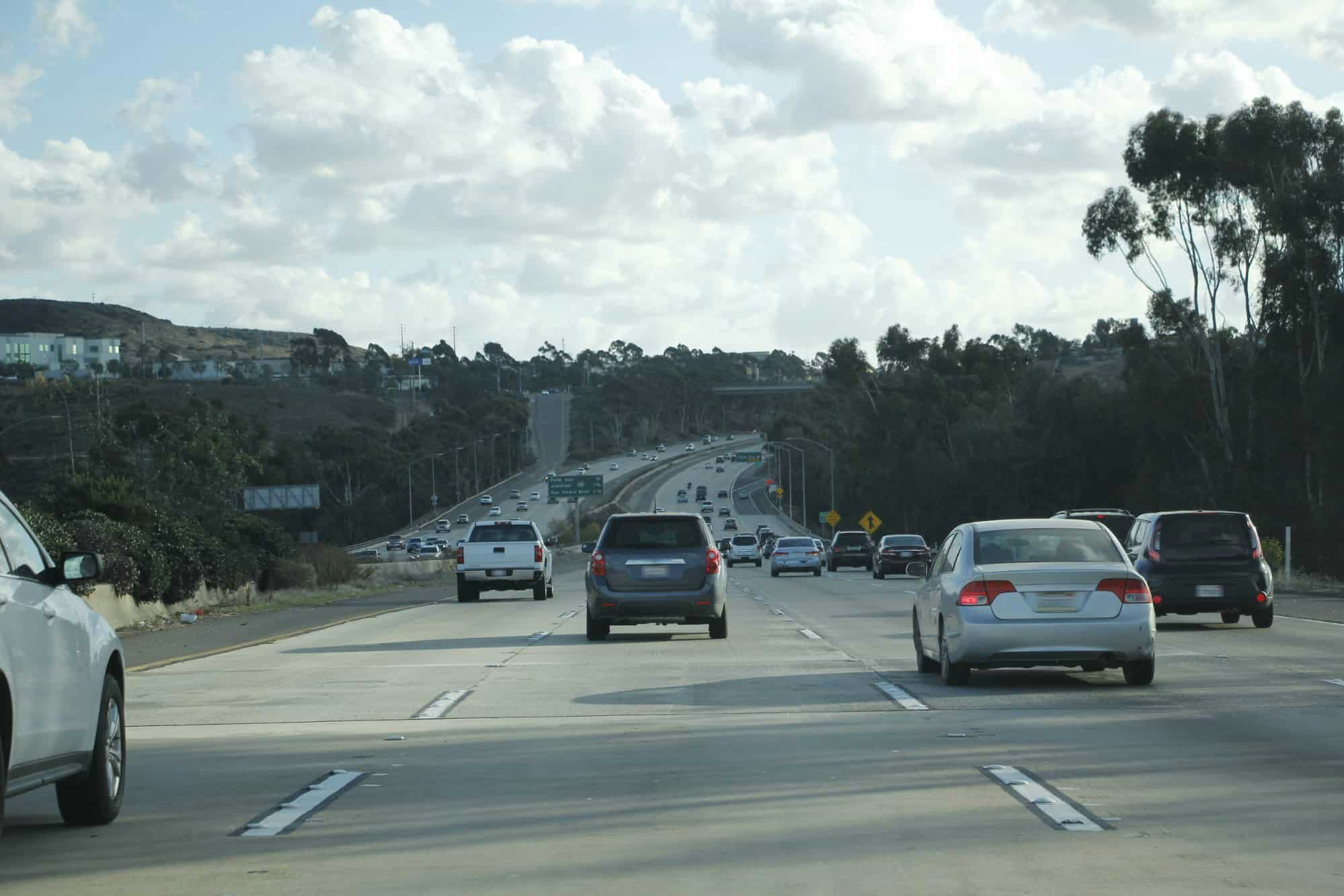
6 – Brake to disengage
When cruise control is no longer needed, or you need to quickly make a maneuver, simply apply pressure to the brakes to disengage the system. Once deactivated, you will be in full control of your vehicle once again.
When NOT to Use Cruise Control
While cruise control is a convenient feature for modern drivers, it is not perfect for all circumstances. In fact, utilizing the system can be quite dangerous if you’re not careful. Be sure not to use cruise control under these conditions.
Heavy Traffic
Heavy, or stop-and-go traffic is not ideal for safely using cruise control. When engaging cruise control on the highway, ensure your lane is clear and there are no vehicles stopping ahead.
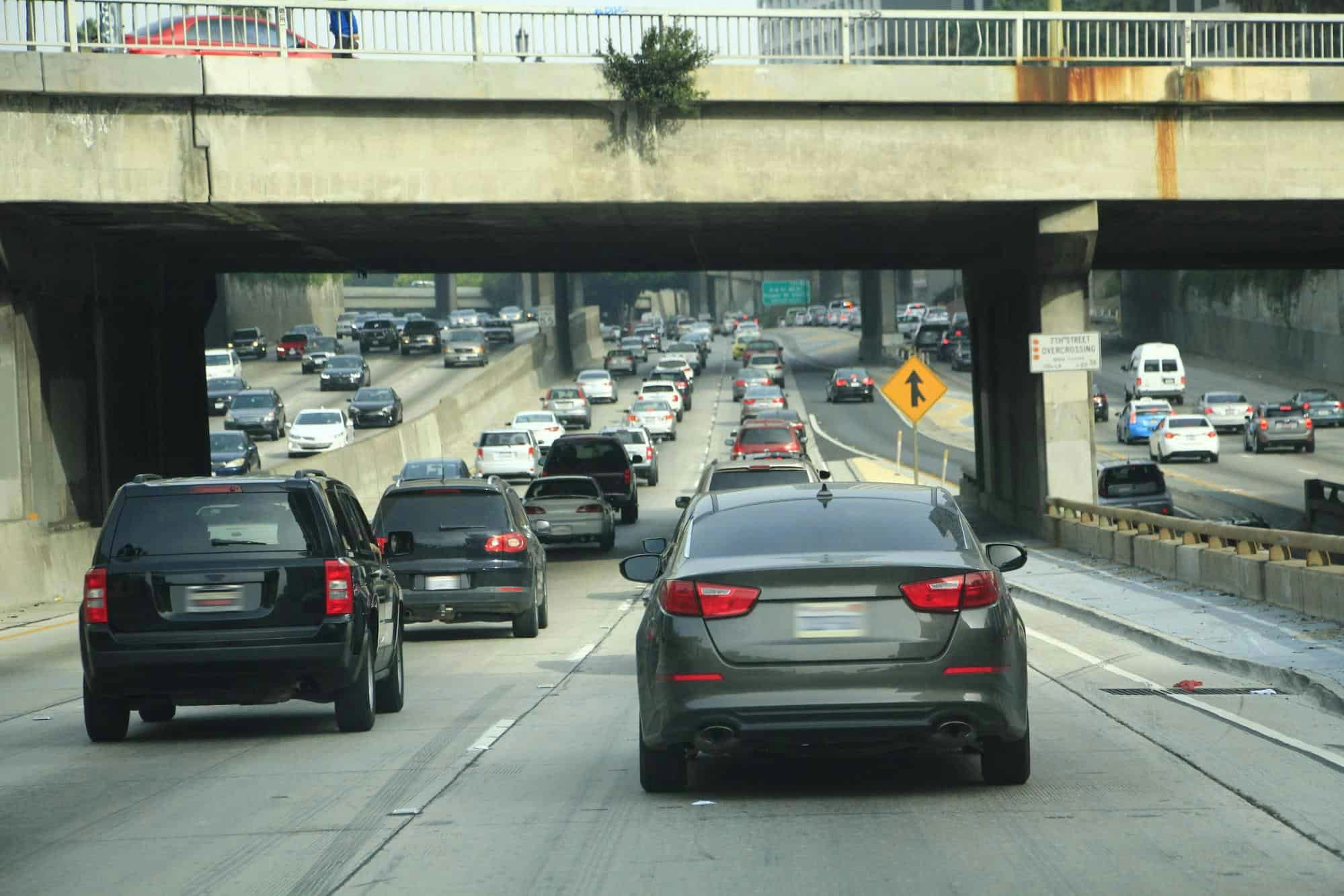
Wet or Icy Conditions
You need to be driving slowly while on wet and icy roads. While cruise control keeps a constant, predetermined speed, it takes away a lot of the manual control needed to stay safe when it’s raining or snowing.
City Driving
While driving through the city, you’ll face a number of stop lights and stop signs that will require manual braking. This action will automatically disengage cruise control.
Winding Roads
Winding roads require more attention than straight, flat streets. Cruise control systems, even adaptable cruise control, may not always detect these streets correctly, causing accidents.
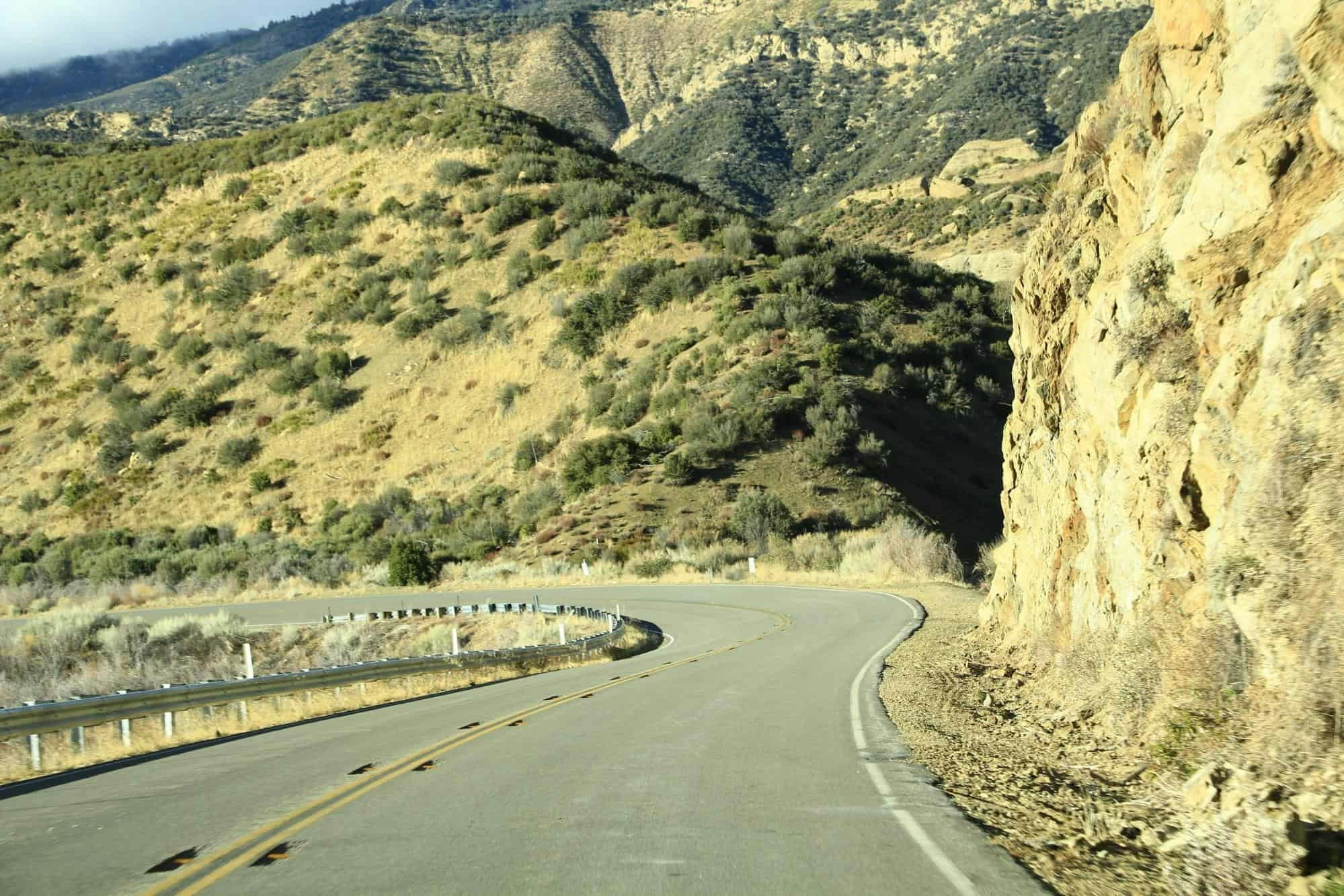
Fatigued Driving
Driving while fatigued is never a good idea, but even less so while using cruise control. Utilizing the system may add to your fatigue, as you give your vehicle more control of the journey. If you’re even the least bit tired, you should never turn on cruise control.
As you can see, cruise control is a great way to relieve much of the stress that comes with everyday driving. The constant rate of speed can also drastically improve fuel efficiency for longer drivers. Cruise control has had a positive impact on the driving industry for 70 years and shows no signs of disappearing anytime soon.

550+ exam-like questions
All you need to ace your test
Perfect for first-timers, renewals and senior citizens
Recommended articles
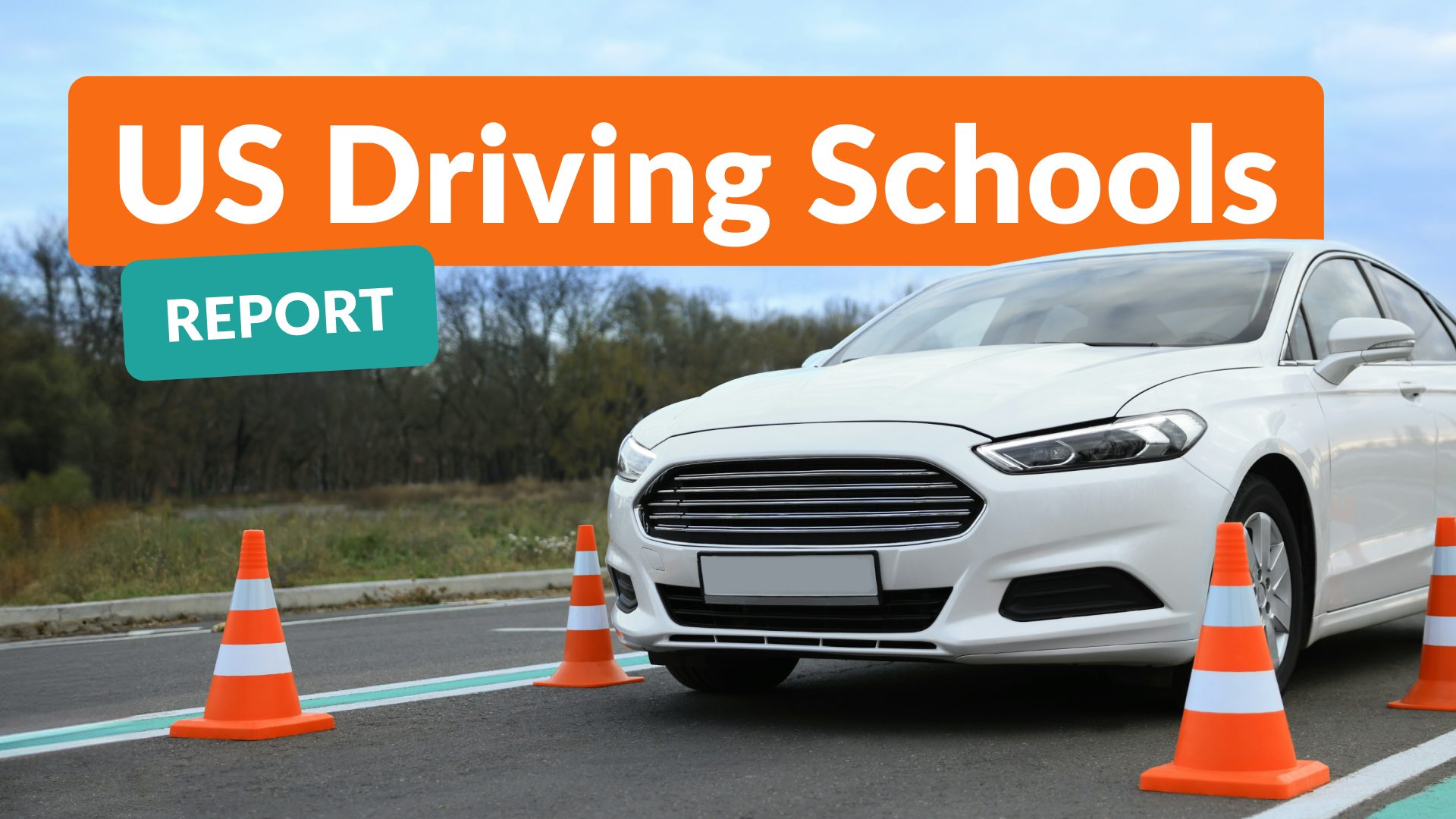
Driving School Costs Report – The Cheapest and Most Expensive States
For many, the ability to drive is not just about mobility—it’s a rite of passage that symbolizes freedom and the thrill of charting one’s own course. the anticipation of sitting behind the wheel for the first time is a universal dream, yet for many aspiring drivers in the united states, this dream comes with variable […].
Distracted Driving Report – The States With the Least and Most Distracted Driving
In april 2024, the national highway traffic safety administration (nhtsa) released data for 2022 that illustrated traffic deaths due to distracted driving increased by 12 percent from 2020 but decreased compared to 2021 to 6%. every year, thousands of drivers and passengers are fatally injured as a result of distracted driving. in 2022, roughly 2,109 […].
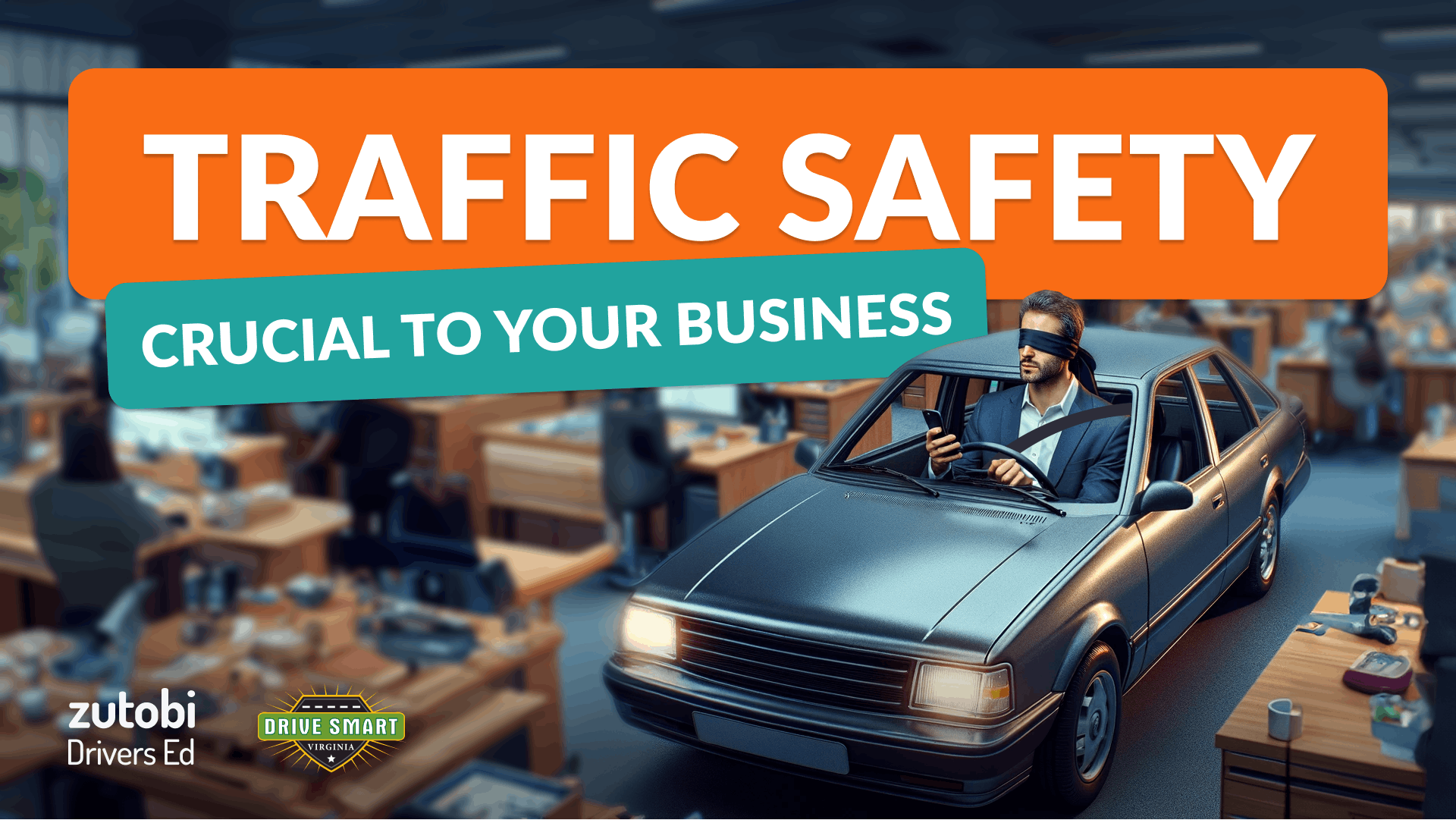
Traffic Safety is Crucial to Your Business
By kristin pettway, drive smart virginia april is distracted driving awareness month and the perfect opportunity for workplaces to review their traffic safety policies and communications. traffic crashes are the leading cause of workplace deaths in america. even if you don’t have a fleet of vehicles, safe driving should still matter to your business. after […].
Ace your DMV test, guaranteed
Get started
Best of the Zutobi blog
- Learner’s Permit Ultimate Guide
- Driving Test Ultimate Guide
- Traffic Lights Guide
- How to Pass the DMV Permit Test
- How to Pass the Driving Test
- Common Reasons For Failing the Road Test
- International Driver’s Permit Guide
- Driver’s License Renewal
- How to Get Your US Driver’s License
- How to Prepare for Your Road Test
- How to Get a Driver’s Permit
- Behind-The-Wheel training
- Terms & conditions
- Privacy policy
- Do Not Sell My Personal Information
- Subscription terms
- Terms & policies
Practice Tests
- Car Practice Tests
- CDL Practice Tests
- Motorcycle Practice Tests
Adept Autotrends
Car and van accessory mobile installations, mobile fitting service covering oxfordshire and surrounding areas. trade and fleet enquiries welcome parking sensors | dash cams | reverse parking cameras cruise controls | van alarms / slam locks | led lightbars | strobe grill lights | reverse warning alarms | speed limiters | get a quote, sales & support.
07980 744 854
Mon-Fri 9am-5.30pm
- Parking Sensors
- Reverse Parking Cameras
- Cruise Control
- Van Alarm Systems & Van Slamlocks
- LED Light Bars-Strobe Safety Lights-Reverse Warning Alarms-Speed Limiters
- Our Fitting Service
- Get A Quote
Cruise control with speed limiter
Transport solutions to keep you moving, how does it work.
The Cruise control is a fully integrated electronic system that enables you to set and maintain your vehicle at a specific speed, at one time it was only found on high-end luxury cars, but now even the smallest modern city vehicles frequently have it fitted.
The Speed Limiter can be adjusted by the driver for varying maximum speed limits via the control lever.
Itâs activated through pressing buttons while youâre driving. The main controls are âon/offâ, âsetâ, âcancelâ and âresumeâ.
The Speed Limiter can be adjusted by the driver for varying maximum speed limits.
E-Cruise, Cruise Control with Speed Limiter

Installation time approx: 2-3 hours See more about our Mobile Fitting Service
Key features
- Reduces driver fatigue and enhances driver comfort.
- Allows you to concentrate on the road and not your speedometer.
- Helps avoid unintended speeding.
- Allows you to set a maximum vehicle speed limit in safety camera enforcement areas.
- The E-Cruise is pre-programmed for each individual vehicle
- Helps to reduce fuel consumption and exhaust emissions (lowering your carbon footprint).
- Mobile installation
For enquiries, please contact us by using our "Get A Quote" facility on our website or via phone or email.
^ Top of page
Adept Autotrends - supplying and fitting car and van accessories for the motor trade and retail since 1982
Mobile fitting service for parking sensors, dashboard witness cameras, reverse parking cameras, cruise controls, alarm systems, led lightbars and led warning lights, reverse alarms and speed limiters., accesories fitted to most car and light commercial vehicles including vauxhall, seat, citroen, renault, ford, dacia, fiat, mini, vw, peugeot, bmw, mazda, toyota, nissan, suzuki, volvo, skoda, mitsubishi, mercedes and jeep., covering oxfordshire and surrounding areas (including gloucestershire, wiltshire, berkshire, buckinghamshire and northamptonshire).
Sales & Support - 07980 744 854
Trade and fleet enquiries welcome
Office Address: 41 Burwell Drive, Witney, OX28 5NE


01242 679222 0800 026 8222
Cruise Control & Speed Limiters
Motor mods can install cruise control to virtually any modern vehicle on the road, including cars, light commercial vehicles and motorhomes..
Cruise control offers the following benefits:
- Drive in a more relaxed and comfortable manner
- Reduce fuel consumption (better MPG)
- Avoid accidental speeding & therefore possible fines, points or licence loss
- Reduce exhaust gas emissions
Motor Mods have been installing cruise control and speed limiters for more than 35 years. Our cruise control system is reliable and tested and approved by TÜV. It has numerous safety features included to guarantee reliable and safe operation under all circumstances.

How do I control the cruise control?
The system we install offers both cruise control and speed limiter functionality, giving you the best of both worlds. The system is simple to operate:
A number of different controls are available, the most popular option is the stalk control which is normally installed on the left hand side of the steering column, below the indicator stalk. This offers all the usual features of cruise control, including set, resume, increase/decrease speed along with two handy presets.
We also offer a gear stick control and dashboard pad controller if the stalk is unsuitable for the application.

How do I check if my vehicle can have cruise control fitted?
The cruise system we install requires the vehicle to have a drive-by-wire accelerator, also referred to as fly-by-wire or electronic throttle. Most modern vehicles (post 2000) will have this type of system, rather than the older, cable-driven throttle. Please contact with your vehicle details and we can check compatibility for you. If your vehicle is on a model change or is an import, we may need you to check with a local mechanic or drop by and we can check for you.
Until recently, we were able to install cruise control to older vehicles and even classic cars with cable-driven throttle systems. Unfortunately, the manufacturer has now ceased production of the parts to allow us to install to such vehicles.
How long does installation take?
The install will take roughly 2-3 hours on most vehicles, although some older vehicles may take slightly longer. Please contact us with your vehicle details for price and further information.
Genuine Cruise Control
Motor Mods also offer genuine cruise control retrofits for VAG group vehicles including Audi, VW, Skoda & Seat.
All genuine parts are used in the installation and your warranty will not be affected. Our prices include parts, labour and coding.
We are VAG approved installers and use ODIS-online to code our retrofits. This means the accessory is added to the vehicle specification and future software updates will not affect the coding.
Please contact us with your vehicle registration for prices and further details.

Speed Limiters
Speed limiters work a similar way to a cruise control, but rather than you controlling the speed via the stalk control, the speed is pre-set and cannot be altered by the driver – thus setting the maximum speed of the vehicle.
Our speed limiters can be set to whatever speed you wish and this speed can also be altered by us in the future, if required. As the unit is separate from the vehicles ECU, the speed limiter can be removed and re-fitted to another vehicle in the future, making it a one-off purchase – a much more efficient way of adding speed limiters to company / fleet vehicles.
A speed limiter is a fantastic money saving device making it ideal for company vehicles. It significantly reduces fuel consumption as well as prolonging the life of the vehicle by reducing wear and tear. It also protects your employee’s licence by avoiding accidental speeding and therefore keeping your insurance premiums down.
Please contact us for further information. Discounts are available for fleet vehicles.
Visit our gallery for more photos of our own installs


IMAGES
VIDEO
COMMENTS
Audi e-tron GT can be delivered with Adaptive cruise control. The Adaptive cruise control (ACC) supports the driver by using the set within the system limits. Speed and the distance to the vehicle in front. If a vehicle in front is detected, it can brake or accelerate the vehicle within the system limits. Even in stop-and-go traffic and in.
Most adaptive cruise control systems allow the driver to adjust the following distance at intervals ranging from close to far. Advanced systems integrate with the vehicle's navigation system and ...
Adaptive cruise control (ACC) is a system designed to help road vehicles maintain a safe following distance and stay within the speed limit. This system adjusts a car's speed automatically so ...
This short animation will show how to use Adaptive Cruise Control and Speed Limiter, and how to swap between the two features.
The adjustable speed limiter, also standard, limits the vehicle's speed to the speed set by the driver. It is active from a speed of 30 km/h (18.6 mph). Distance to the next car: adaptive cruise control. Adaptive cruise control (ACC) is the central component of the optional Tour assist package.
The adaptive cruise control system works in close coordination with the MMI navigation plus, camera-based recognition of traffic signs and the predictive efficiency assistant, another pioneering system from the assistance package Tour. It automatically adjusts the preselected speed to the conditions - the route topography, speed limits and ...
The central element of the Audi driver assistance systems is the adaptive cruise control with stop & go function, an automatic distance control system. The system, which is available in a number of larger models, regulates the speed and the interval to the vehicle ahead by automatically accelerating and braking in a speed range of 0 to 250 km/h ...
2. 2018 Mazda 3. The 2018 Mazda 3 provides drivers with an adaptive cruise control system that detects rear-cross traffic and blind-spot monitoring, great for making safe lane changes. It also ...
On a car with adaptive cruise control (ACC), you switch on the system, then you can raise or lower your speed as desired, and the car will accelerate to that set speed. These systems use either ...
We are the manufacturer of ZEMCO Cruise Control systems. ZEMCO has been a global leader in speed regulators, such as Cruise Control, speed limiters, and RPM limiters, for over 3 decades. ZEMCO speed regulators are highly user-friendly and easy to install. The cruise control kits offered by ZEMCO are designed to provide drivers with a seamless ...
Experience the Superior Quality and Innovation of Zemco. Zemco is a renowned brand that has been a leader in the production and distribution of high-quality cruise control systems and speed limiters for over three decades. As the official manufacturer, we take great pride in providing our esteemed customers with access to Zemco's superior product range, backed by expert support.
Watch the video and follow the steps below to learn how to use Intelligent Adaptive Cruise Control, which combines Speed Sign Recognition with Adaptive Cruise Control, to adjust the cruise set speed to the speed limit detected by the speed sign recognition system.For example, if the Speed Sign Recognition system detects a 50 mph speed limit, the cruise set speed is updated to 50 mph.
Our cruise control system 1 works electronically to help regulate your car's speed. It reduces the stress on drivers and offers you more comfort on long journeys by keeping the vehicle at a constant speed. It's particularly effective when you have to stay within speed limits for a long way - when driving through miles of roadworks on the motorway, for example - and cuts the risk of your speed ...
Allows you to set a maximum vehicle speed limit in safety camera enforcement areas. Reduces driver fatigue and enhances driver comfort. The Bridgwater Electronics range of Cruise Control products comprises 2 systems:-. AP900. AP900C. The 2 systems may be operated by one of 3 different types of control:-. CM7 Dashboard Mounted Control.
The Adaptive cruise control (ACC) supports the driver within the system limits. Speed and the distance to the vehicle in front. If a vehicle in front is detected, it can brake or accelerate the vehicle within the system limits. Even in stop-and-go traffic and in. The system brakes traffic jams to a standstill and can be automated again ...
Speeding fines UK 2024: how much will I have to pay? Not all cruise control systems are the same. Some include a speed limiter function, designed to stop the driver exceeding the speed limit ...
5 - Watch the road and steer. Watching the road is essential when cruise control is engaged. Cruise control is not a substitute for a human driver and will require supervision at every step. If you are using a semi-autonomous system, you will not need to steer but will need to keep at least one hand on the wheel for safety measures.
This is like a more advanced version of cruise control which users lasers, sensors or radar at the front of the car to detect other cars. These can tell how far away the car in front is. ACC will match the speed of the car in front of you (as long as it's within the speed you've set). It'll maintain a safe distance behind the car in front.
You don't have to sit in stop and go traffic for adaptive cruise to be worth it. Reply reply. andysaurus_rex. •. Reply reply. xdrift0rx. •. I constantly tell people ACC is one of the best highway features. You don't realize how much mental math your brain does trying to keep a safe distance from others.
Cruise Control and Speed Limiter Demonstration step by step guide - Peugeot #cruisecontrol #peugeot #howto
The Speed Limiter can be adjusted by the driver for varying maximum speed limits via the control lever. It's activated through pressing buttons while you're driving. The main controls are 'on/off', 'set', 'cancel' and 'resume'. The Speed Limiter can be adjusted by the driver for varying maximum speed limits.
The system we install offers both cruise control and speed limiter functionality, giving you the best of both worlds. The system is simple to operate: A number of different controls are available, the most popular option is the stalk control which is normally installed on the left hand side of the steering column, below the indicator stalk.
Common cruise control icon on dashboards specified by ISO-7000-2047, ISO 2575:2010, and ISO 6727. Another icon exists for the more modern adaptive cruise control, but some cars also use the cruise control icon for the speed limiter function, which has no standard icon.. Cruise control (also known as speed control, cruise command, autocruise, or tempomat) is a system that automatically controls ...